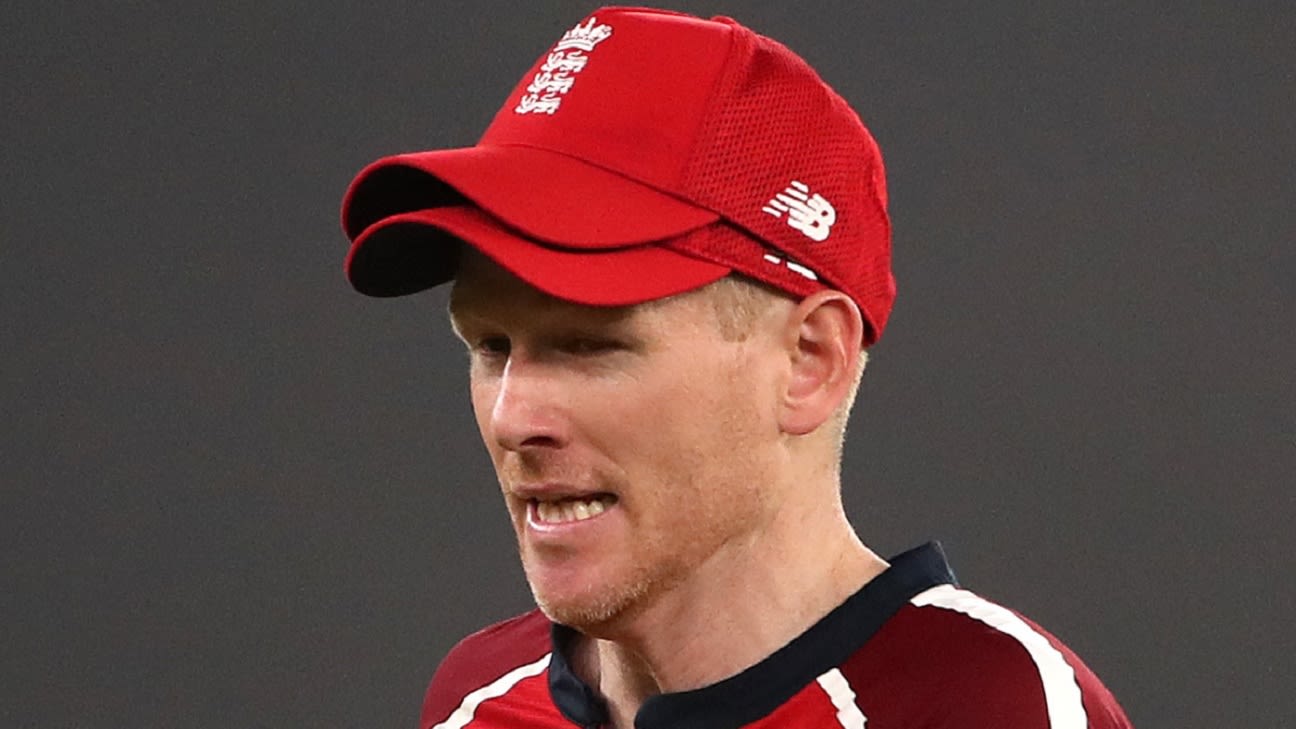Failure to convert 2-1 lead leaves England with as many questions as answers ahead of World Cup
On the eve of the fourth T20I of this series, Mark Wood was asked how big a statement it would be for England to convert their 2-1 lead into a series win against India. After sliding to a 3-2 loss, the question might be flipped on its head: how worried should England be about their series defeat?
It’s important to keep things in perspective. This was England’s first defeat in a T20I series since 2018 – also against India – and their two victories were dominant eight-wicket wins. They will have learned plenty from their three defeats, and from the opportunity to play a five-match series in the T20 World Cup’s host country.
But equally, this result should provide England with a reality check. They have been at full strength throughout, after players were rested during the Test series earlier this winter to ensure Eoin Morgan would have a first-choice side at his disposal, and fielded the same XI throughout the series (with the exception of one injury-enforced change in the second game).
“There are a huge amount of positives,” Eoin Morgan said after their 36-run defeat in the series decider. “In four out of the five games we’ve produced some of our best powerplay bowling that we have in the last couple of years. [There are] learnings from the back end of the games we’ve lost: our middle order weren’t as sharp as they normally are. One of our strengths is how quickly guys get in and adapt to surfaces, [but that] didn’t necessarily happen, and in a similar period of the game with our bowlers as well.”
England backed their playing first-choice side, reasoning that it was crucial to give them as much exposure as possible to the conditions, but were beaten by an India attack missing its spearhead in Jasprit Bumrah – not to mention the absences of Ravindra Jadeja and Mohammed Shami. And while India rotated to give opportunities to their fringe players, England turned down the chance to do the same with Sam Billings and Moeen Ali.
Their failure to get home in run chases in their final two games may also be a frustration. They have been superb in run chases over the last year, chasing down eight targets out of nine including the first two games of the series, but their failure to extend that record will mean teams are less intimidated by them heading into the World Cup. As Bhuvneshwar Kumar and Shardul Thakur showed, their six-hitters can be vulnerable against pace-off options in the second half of an innings, particularly on pitches offering grip.
Their poor start with the ball also undid some of the strides they had taken earlier in the series. Having seemingly addressed their problems in the powerplay in the first four games, England leaked 60 runs inside the first six overs on Saturday night, with their three best bowlers – Jofra Archer, Adil Rashid and Wood – all bowling two each. In the middle overs, their hard-length plan to Hardik Pandya backfired – though he did ride his luck at times – and at the death, Wood and Chris Jordan were both expensive.
Perhaps more than anything, England will have been disappointed that they were not exposed to the sort of sharply-spinning pitches that they may face in the World Cup itself. In the 2016 edition of the tournament, there were several low-scoring games – particularly in Nagpur, but also in Delhi and Kolkata – but England’s draw saw them play most of their games at high-scoring venues that suited their blitzkrieg style much better.
Coming into the series, Morgan had highlighted his desire to play on pitches that prepared England for low-scoring games against the turning ball, but the surfaces in Ahmedabad were generally flat, to the extent that England fielded a solitary spinner in Rashid throughout the series.
“Coming here wanting to be challenged for us means playing on turning pitches that are completely alien to us, simply because we don’t have opportunities to play on them very often,” Morgan said. “The ball has barely turned, and given the pitches that we’ve played on, bar two, they’ve been really good to play on. I would have loved a couple of really low-scoring games.”
England’s next six T20Is are all in home conditions, with three scheduled against both Sri Lanka and Pakistan in June and July respectively. As a result, Morgan highlighted the importance of performances in the IPL for England’s preparation, with 12 players staying in India for the tournament after the ODI series.
“Taking advantage of the upcoming IPL is going to be huge,” he said. “As a team and as individuals we don’t want to stand still, we want to continue to move forward. Any opportunity guys get at the IPL, you want to try and make the most of it, because we’re going to be playing at home for our summer and then we go to Bangladesh and Pakistan but there is limited opportunity to get our best XI [playing] in those games. The experience over the next couple of months is the most valuable.”
The upshot is that England finish this series with as many questions as answers. They are clearly a talented side, but with lingering doubts remaining about their adaptability to Indian conditions and the positions of several players. Losing a series in which they had the significant advantage of winning four tosses out of five against a team missing its best bowler should serve a reminder that there is still plenty of work to be done.
Matt Roller is an assistant editor at ESPNcricinfo. He tweets at @mroller98
